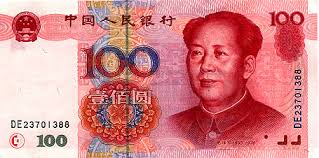Japanese Yen is attempting to break out of a major H&S pattern.
A chart analysis of the forex markets
This post looks at the present forex markets through the lens of classical charting principles, as originally forumated in the early 1930s by Richard W. Schabacker, editor at the time of Fortune Magazine. Factor LLC is recognized as one of the world’s preeminent authorities on classical charting principles as applied to the futures and forex markets.
There are a number of forex crosses that indicate substantial trading opportunities for traders willing to hold positions for weeks or even months.
Before examining the current forex markets, a basic understanding of classical charting principles is approriate.
- Charts simply show where a market has been, what it is doing now, and what the path of least resistance might be. Classical charting is simply an attempt to define market behavior in geometric terms. The real edge provided by classical charting comes from the marriage of risk management with well-defined geometric patterns.
- There is no magic in price charting. Charts do NOT predict the future. Unlike some Elliott Wave adherents who attempt to label every zig and zag, I believe that the vast overwhelming majority of markets the vast overwhelming proportion of time cannot be understood through the lenses of classical chart principles (or any other method of technical analysis, including Elliott Wave Theory).
- Well-defined chart patterns naturally provide opposite possible outcomes. A rectangle can complete in either direction. A rising wedge can become a running wedge. A symmetrical triangle can fake a trader out in more ways than imaginable. A H&S pattern can become a H&S failure. And on and on it goes.
- Charts are subject to morphology. I do my best to always find a geometric explanation for price action. As a chart morphs it can be subject to different geometric construction. As a general rule, intraday charts morph more often than daily charts, daily charts morph more often than weekly charts. But, more often than not a market cannot be explained easily by geometry. It is then time to find another market. This is why I might be focused on Robusta Coffee one day and some foreign stock index another day. I want to focus on markets I can define geometrically.
- Reliable chart trading is cyclical. There are periods during the year (an average of two periods lasting two or so months each) when an unusual number of markets form well defined patterns AND the markets respond to those patterns in predictable fashion. Using language of farming, this is time to make hay. During the other periods we rely on aggressive risk management to limit our losses and keep out pile of chips somewhat intact.
- It is a thing of beauty when classical chart configurations work. It is a thing of frustration when they do not work. It is a thing of confusion when the majority of markets defy definition from a classical charting perspective.
A review of selective forex markets
Eurocurrency (EUR/USD)
The long-term trend (as featured by the 45-year trendline) in EUR is under threat, as shown by the quarterly graph. The dominant chart construction is the 6-1/2 year descending triangle completed in Jan 2015. This pattern has a target of $.84. Such a decline would likely be accompanied by a massive change in the European Currency Mechanism (ERM).
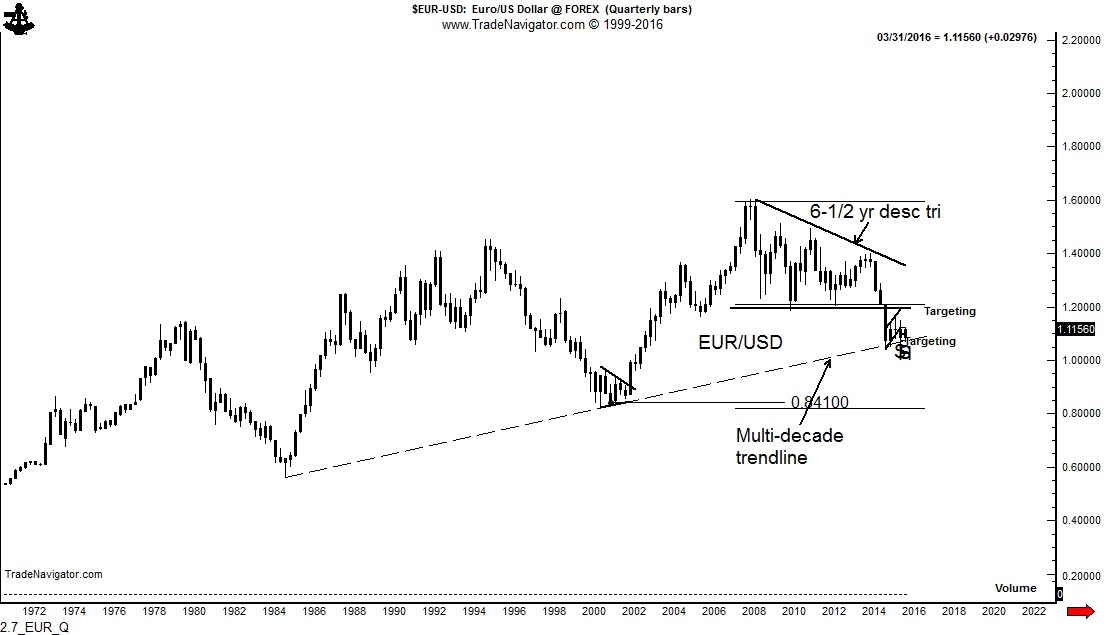
The monthly graph more clearly shows the descending triangle top pattern and the current market in relation to the 45-year trendline.
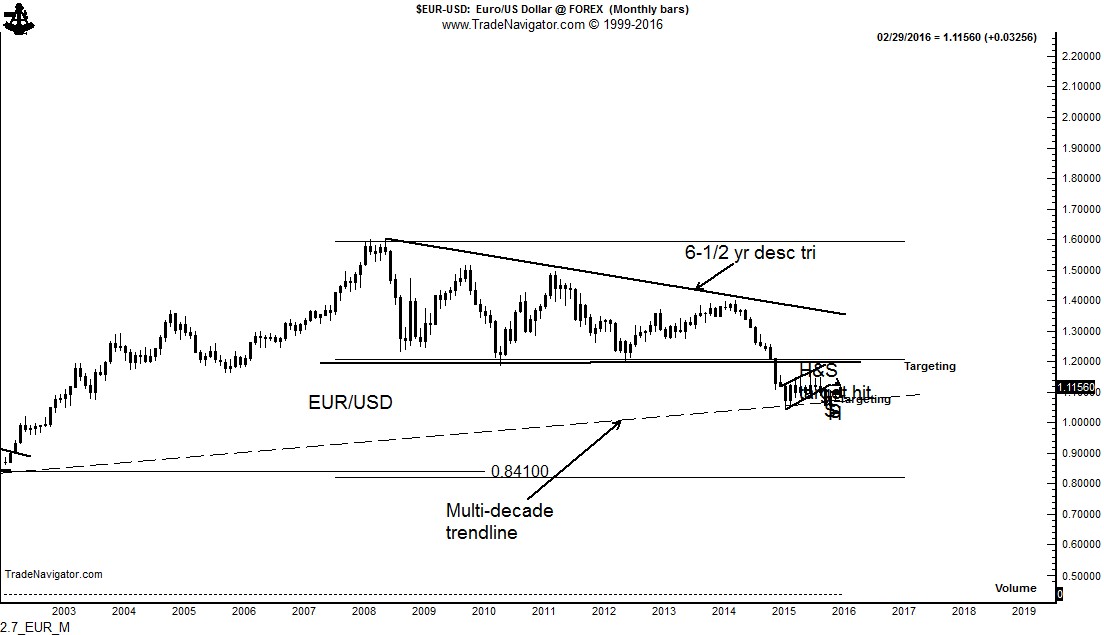
The daily chart examines more closely the short-term price behavior for EUR. The currency held the 45-year trendline in Mar and Dec 2015. The congestion zone that started in Mar 2015 must be resolved before the next major trend in EUR begins. Notice the bear channel that was completed in Oct 2015. EUR has recently rallied to retest this channel. The “January Effect,” formulated in 2007 by Factor LLC (http://www.peterlbrandt.com/u-s-dollar-seen-annual-high-low-january-20-past-21-years/) would indicate that the Jan 2016 lows may become the lows for the year. More likely, EUR will remain in a broad trading range between 1.06 and 1.18 for the foreseeable future.
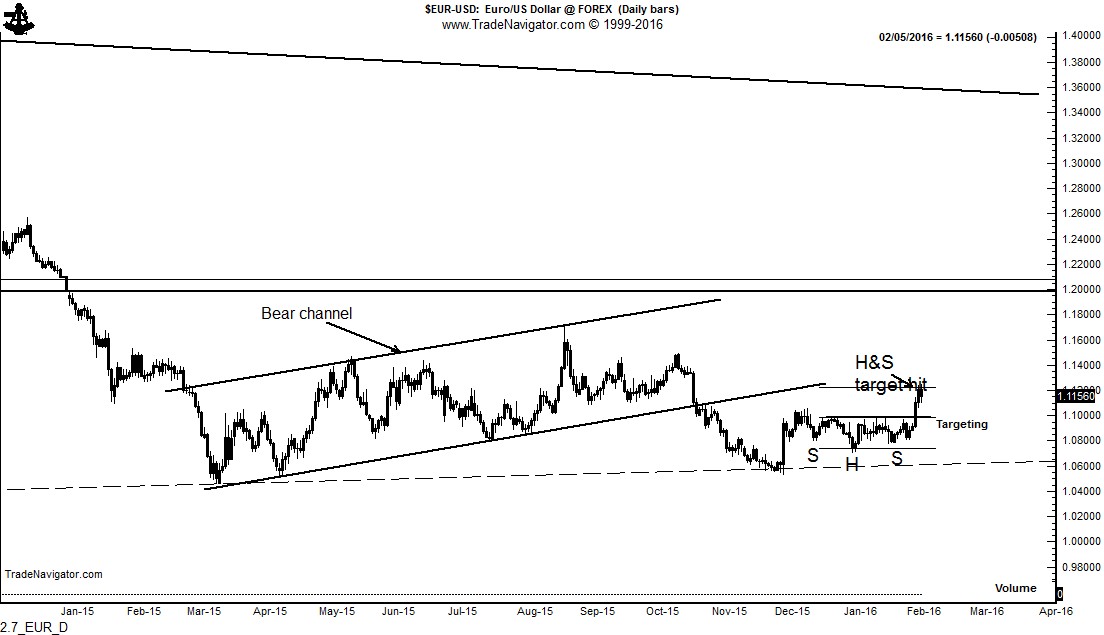
Chinese Yuan (USD/CNH)
There has been much media coverage about the depreciation of the Chinese Yuan (resulting in a stronger USD in relationship to the Yuan as shown on the USD/CNH charts). You have not seen anything yet. The Factor has alerted members to the Yuan’s devaluation from the very start (http://www.peterlbrandt.com/chinese-yuan-usdcnh-experiences-historic-breakout-next-stop-6-8000/). The monthly chart shows two major features.
The monthly graph shows a portion of the 20-year decline in the USD against the Yuan, engineered by the Chinese government. This depreciation in the USD against the Yuan (appreciation of the Yuan) was bogus and not driven by market forces.
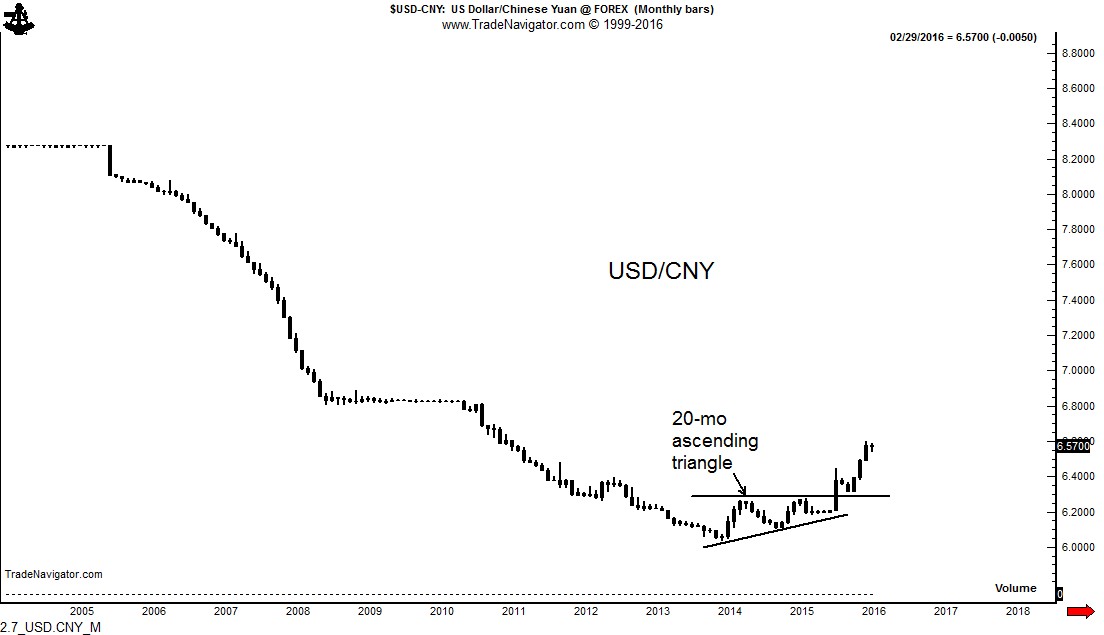
The crossrate completed a 20-month ascending triangle in Aug 2015. The major trend in USD/CNH is now UP UP UP UP!!!!!! As the Yuan becomes a global reserve currency unit it will be subject to global macro forces. The Yuan was valued at 16.2 cents in Aug 2015 (a USD/CNH crossrate of 6.2 to 1).
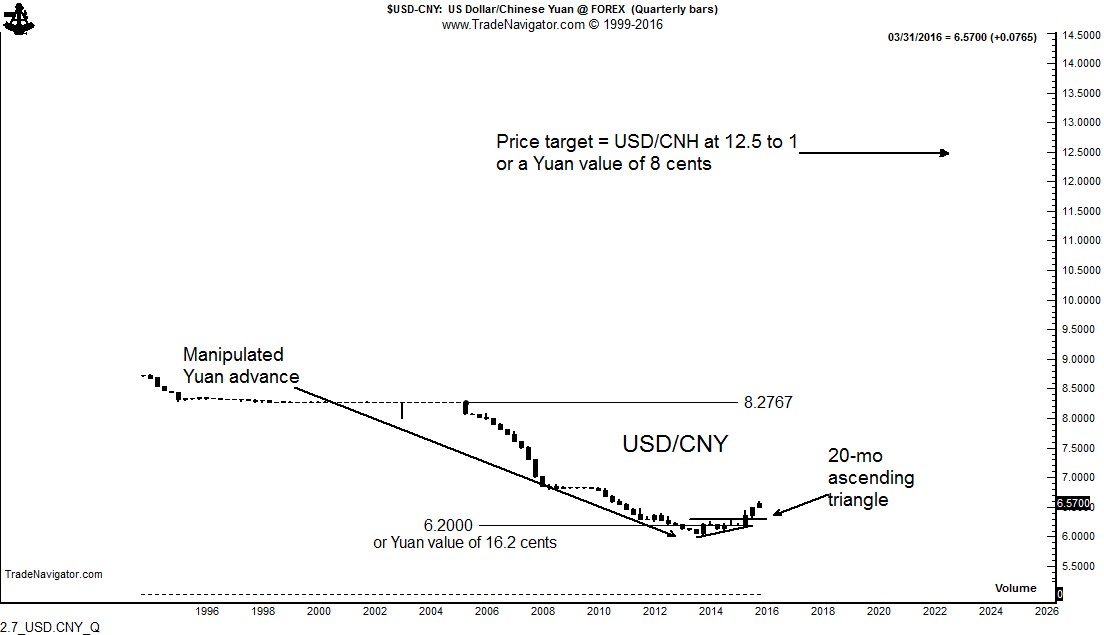
I believe that genuine global macro forces will eventually discount the Yuan by 50% — a value of 8 cents, or a USD/CNH crossrate of 12.5 to 1.
There are several forex crossrates setting up NOW for possible speculative trades.
Japanese Yen
The Japanese Yen is a textbook charting market, as shown by the monthly graph. The Japanese Central Bank (BOJ) has thrown everything including the kitchen sink at the forex market in an attempt to cheapen the Yen. Yet, the Yen is displaying a near-perfect H&S bottom pattern on the weekly graph (red box). A decisive close above .008700 will complete this bottom and establish an uptrend in the Yen.
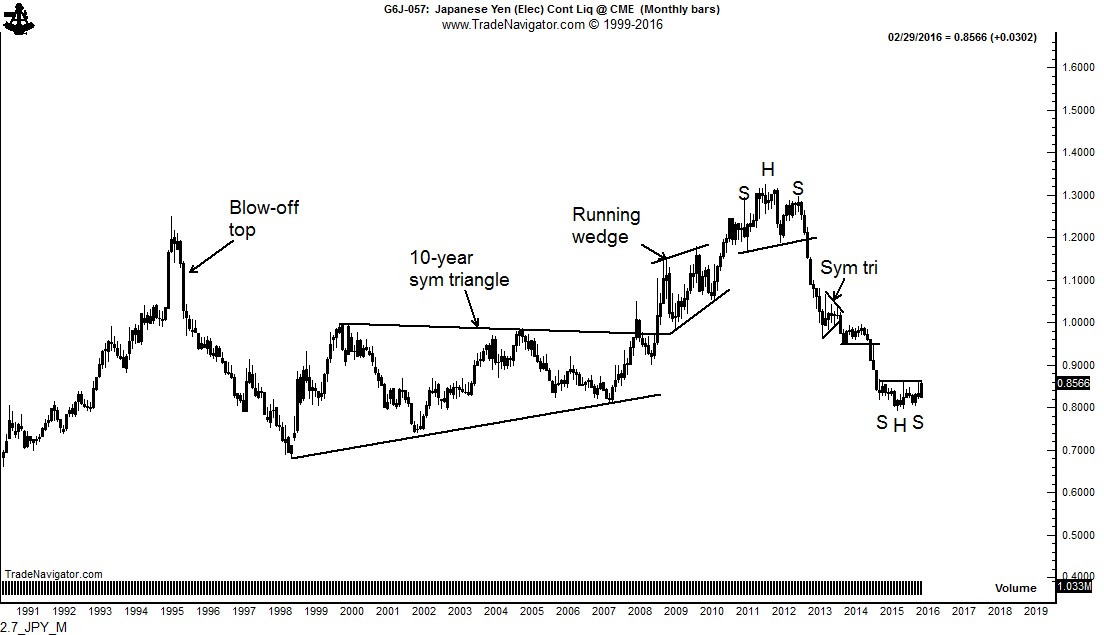
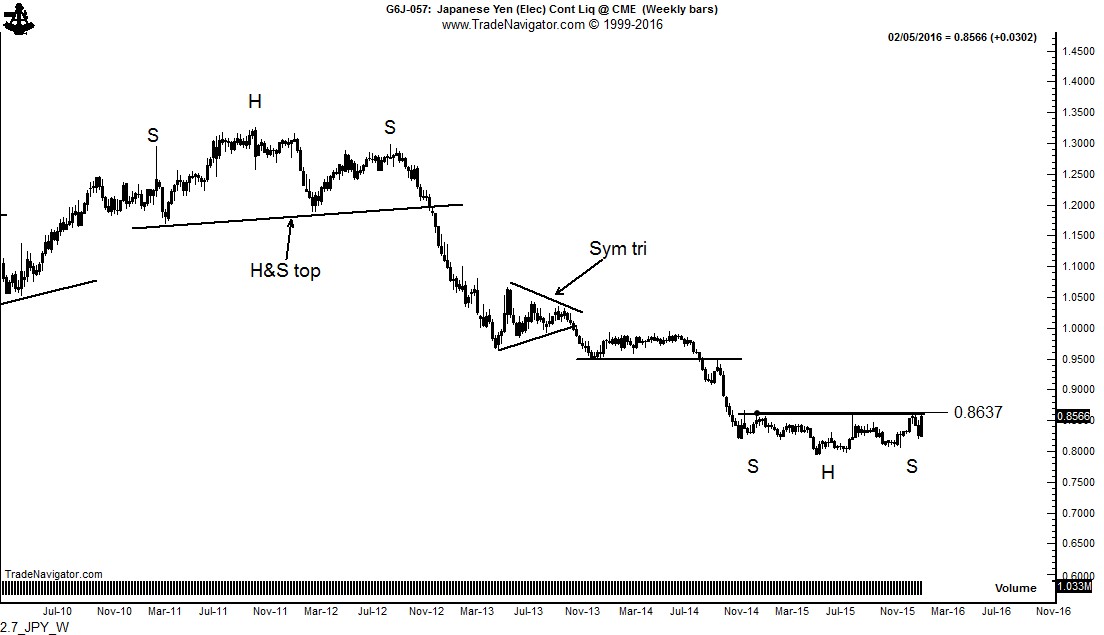
U.S. Dollar Index
The advance in Sep 2014 completed a 6-year symmetrical triangle to establish a long-term bullish trend in the USDX, as shown on the monthly graph.
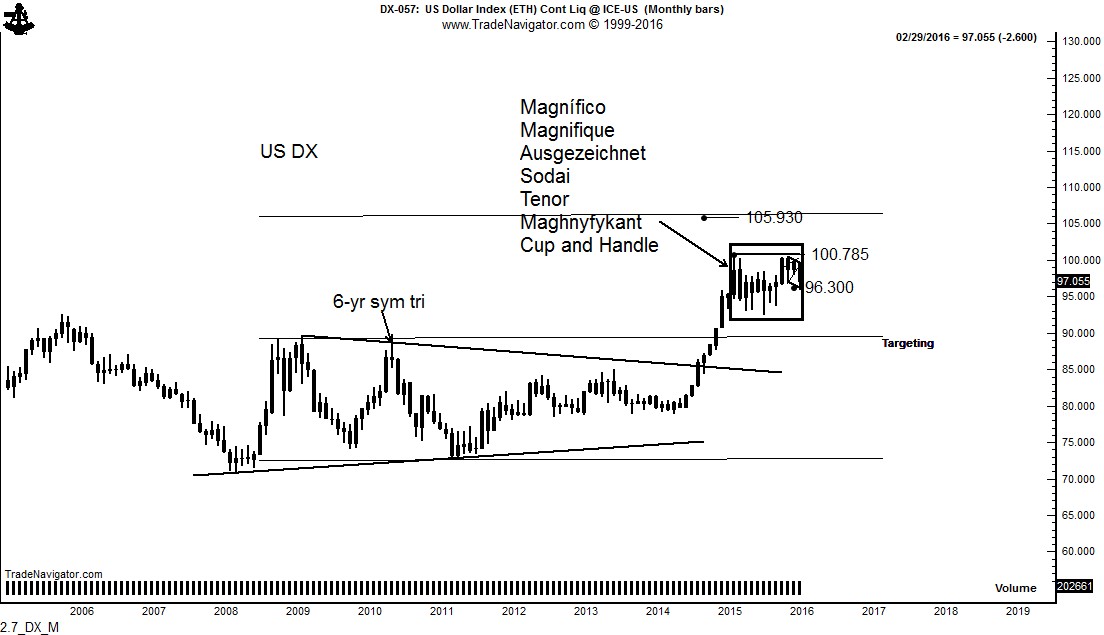
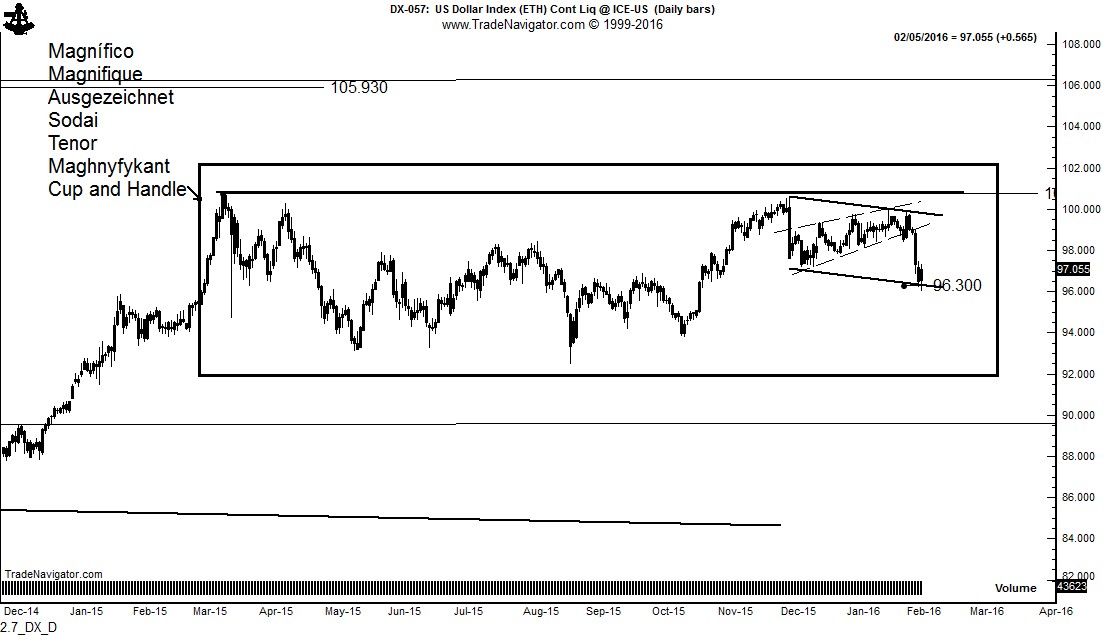
The DX has been stalled in a trading range for the past 11 months. As a general rule of charting, most congestion periods become resolved in the direction that preceded the consolidation area. This congestion zone has now taken the form of a classic cup and handle-like pattern on the weekly chart. A decisive close above 101.25 would complete this congestion area and launch a sustained price drive to at least 117 with the potential of 120-plus. Trader friends who are excellent at global macro analysis tell me that the financial world is short $10-plus TRILLION in carry trades of various varieties and forms. The door to escape a short USD position could get awfully crowded.
USD/SEK
The In-and-Out Burger/KÖTTBULLAR crossrate has been tracing out an 11-month symmetrical triangle on the weekly graph, as shown. A decisive close above 8.9 to 1 would complete this pattern and establish a profit target of 9.6 or so.
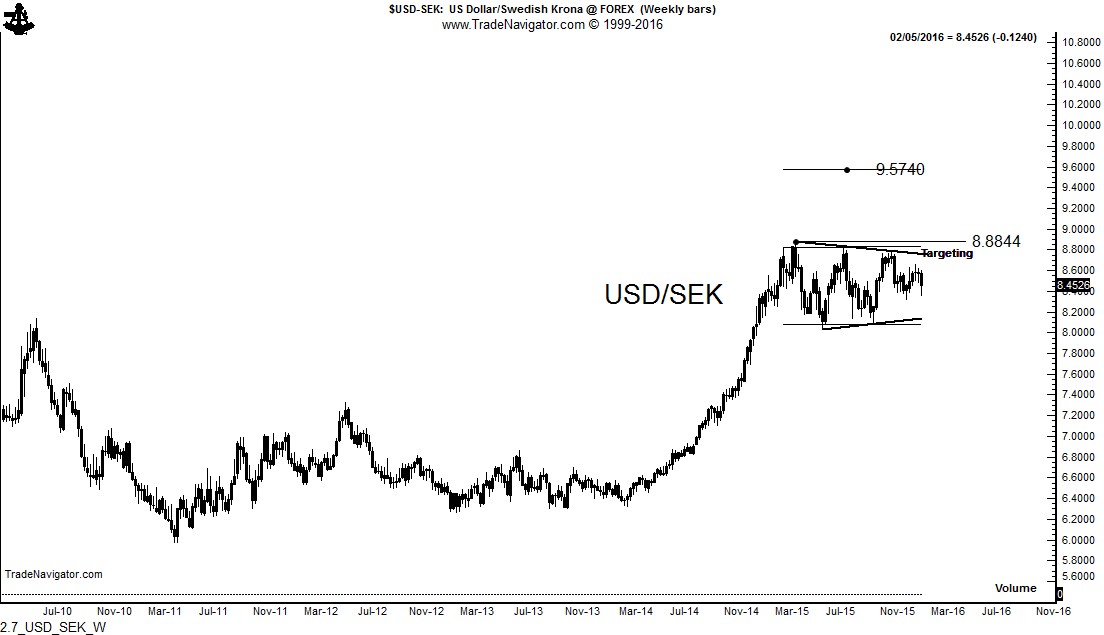
AUD/NZD
The Aussie Dollar has been losing ground to the New Zealand Dollar since a symmetrical triangle top was completed in Apr 2013. The crossrate is forming a possible H&S bottom pattern. My best guess is that the crossrate will blow out of the bottom of this pattern, completing a H&S failure pattern, and establish a price target of .9161. This could be a very profitable trade. I am not discounting the opposite possibility that the pattern could become a completed H&S bottom.
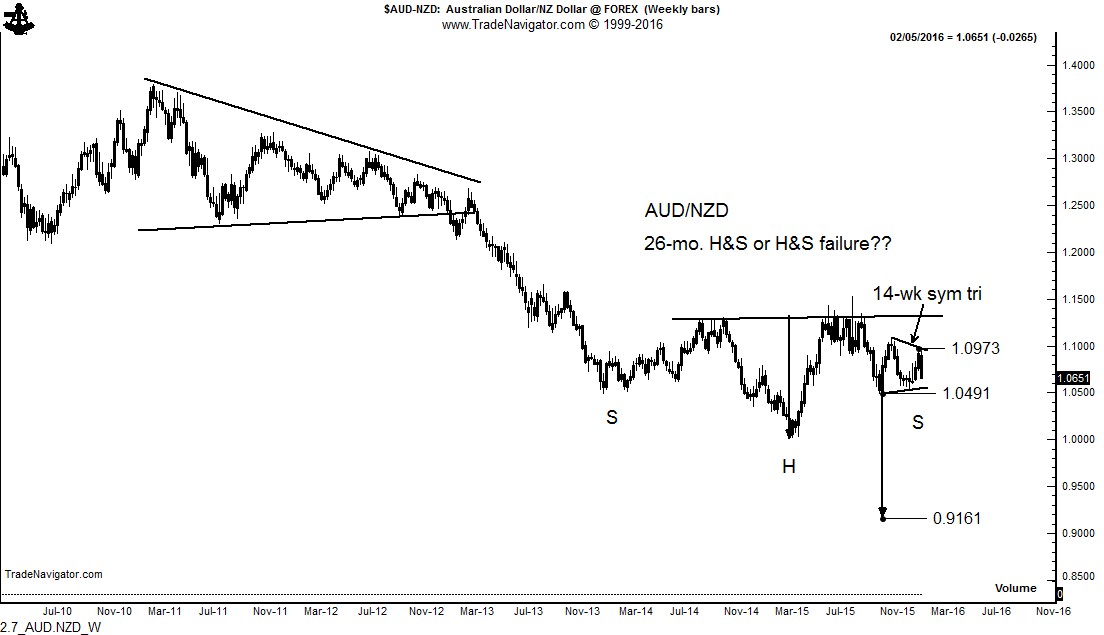
AUD/JPY
A hybrid of forex crosses already presented herein is the AUD/JPY. I propose being short the AUD and long the JPY. The quarterly graph shows that this crossrate has remained in a range of 55 JPY to 1 AUD on the lower end and 110 JPY to 1 AUD on the upper end.
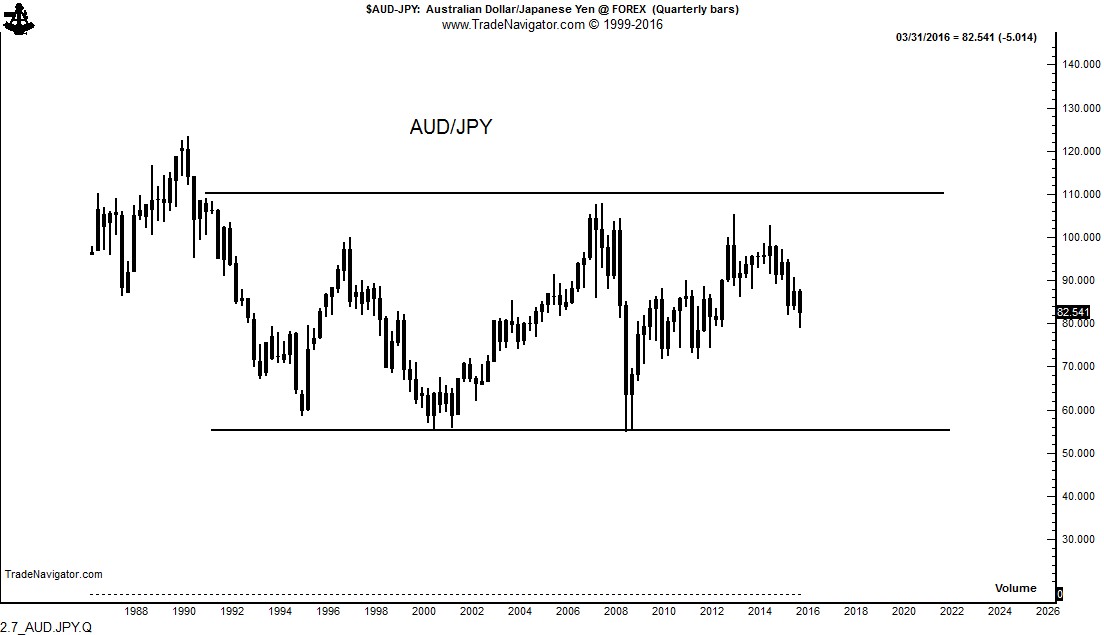
The daily AUD/JPY graph displays a series of continuation H&S patterns. The Jan 2016 rally appears to be a simple retest of the H&S top pattern completed earlier in the month. The cross turned sharply lower this past week – and this decline is likely the start of the next down leg. I expect the next stopping point will be in the mid-70s.
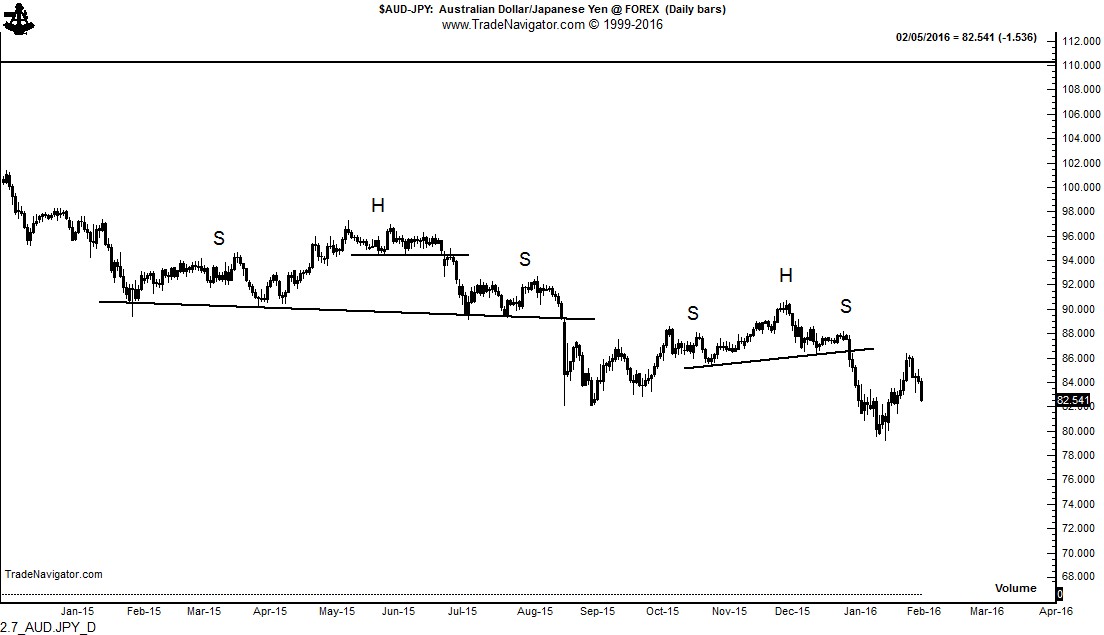
There are many other forex crosses followed by The Factor and featured for members in regular Factor Updates and Factor Alerts
$AUD/JPY, $AUD/NZD, $USD/SEK, $USD/JPY, $6J_F, $DX_F, $UUP, $EUR/USD, $6E_F, $USD/CNH
plb
###

